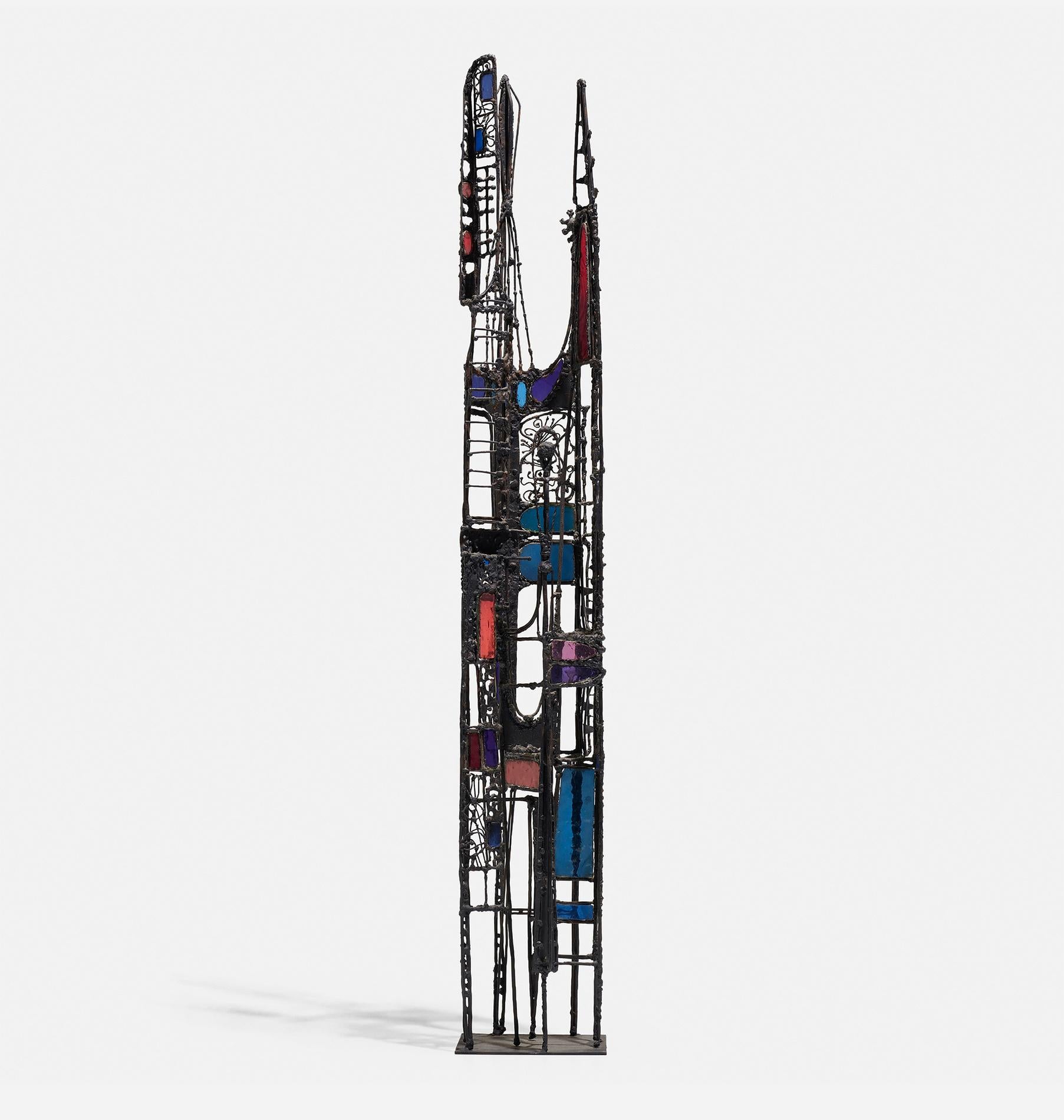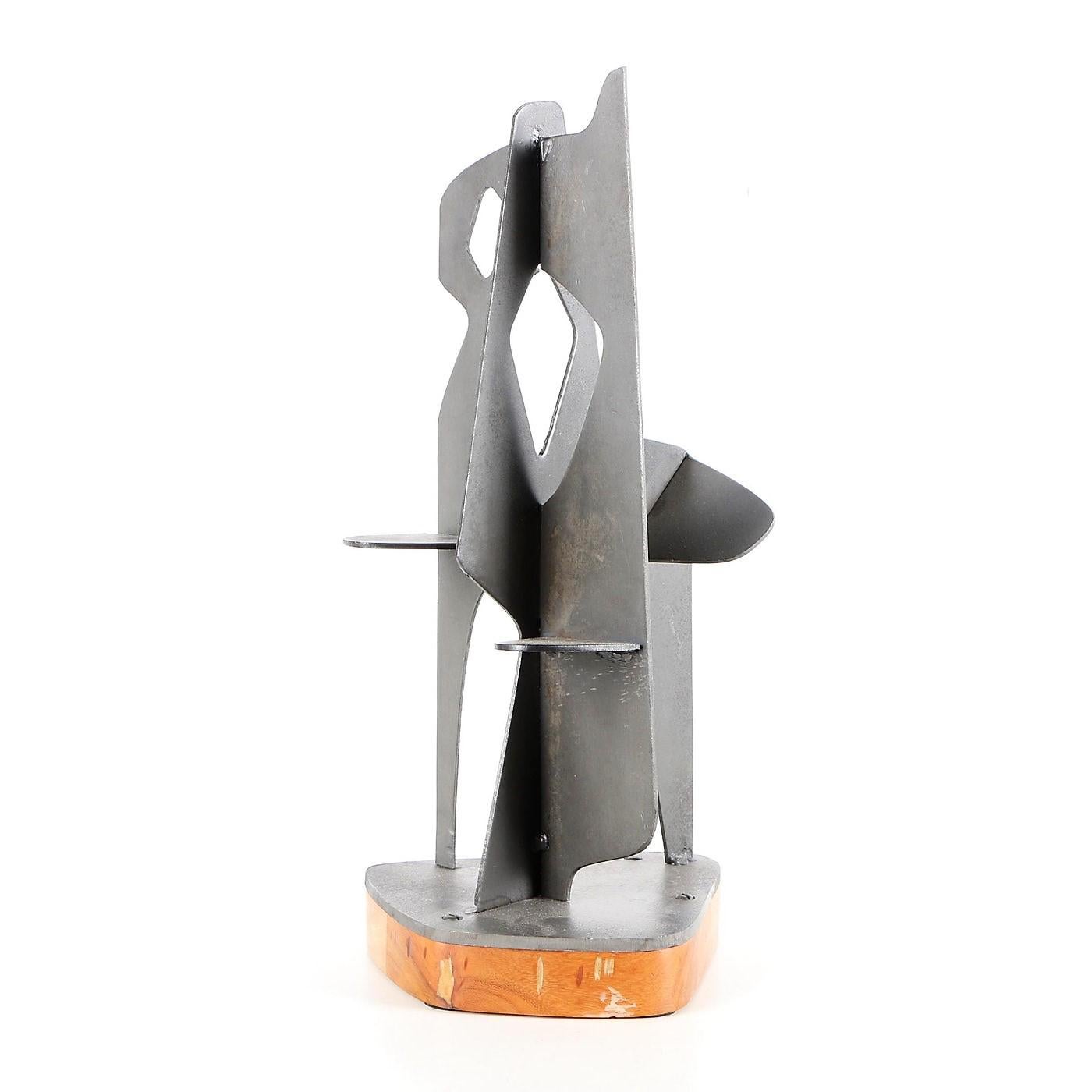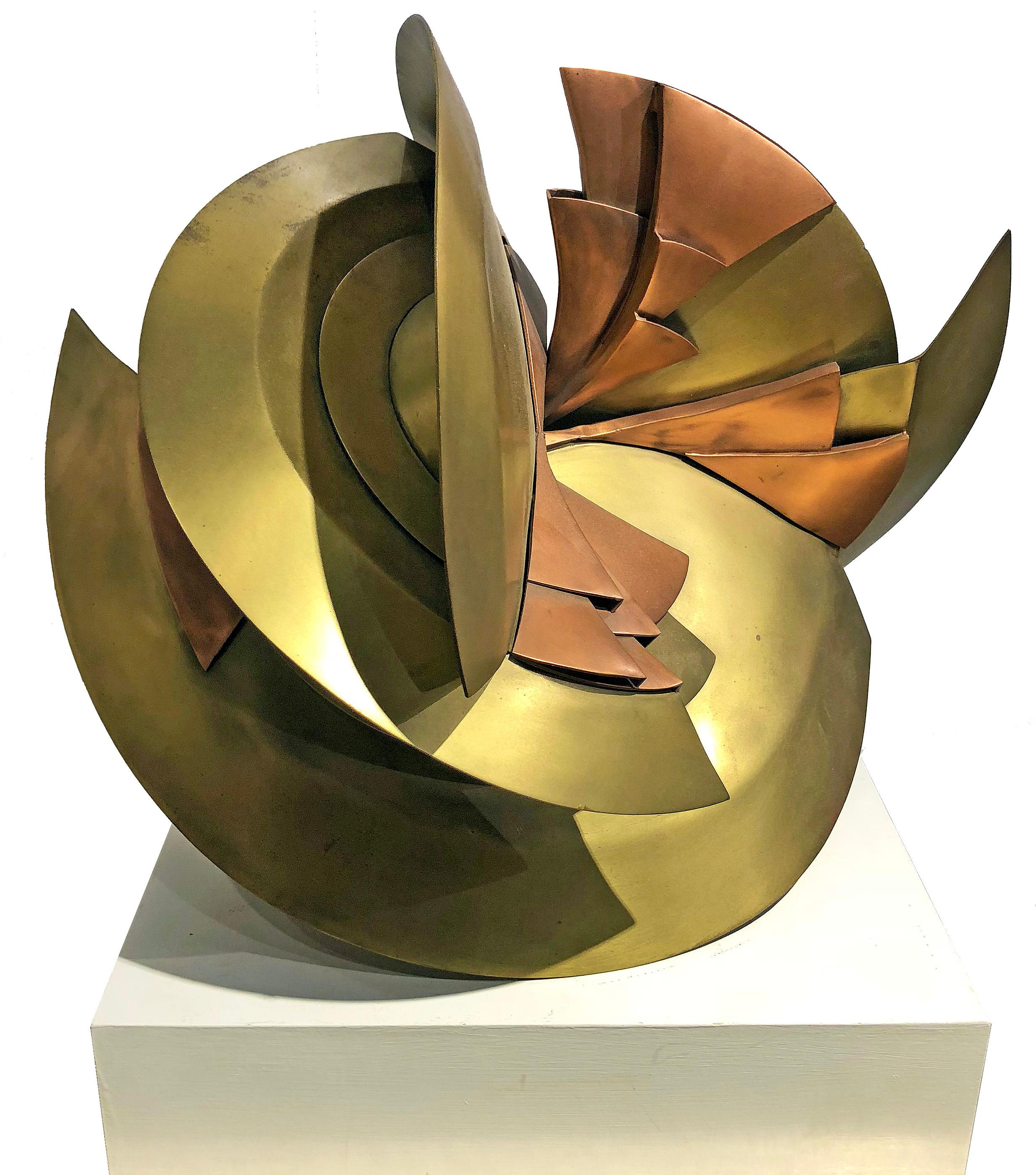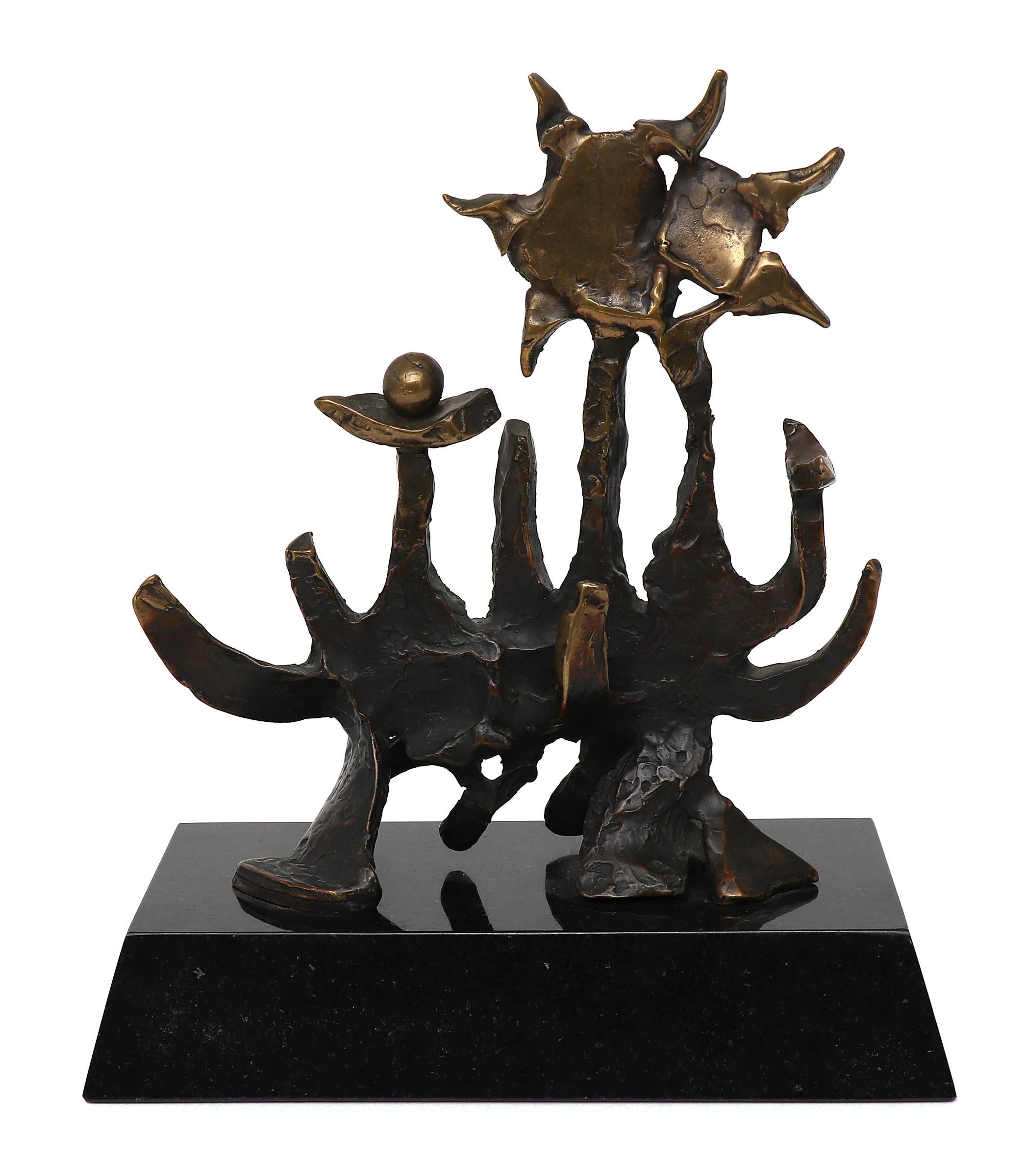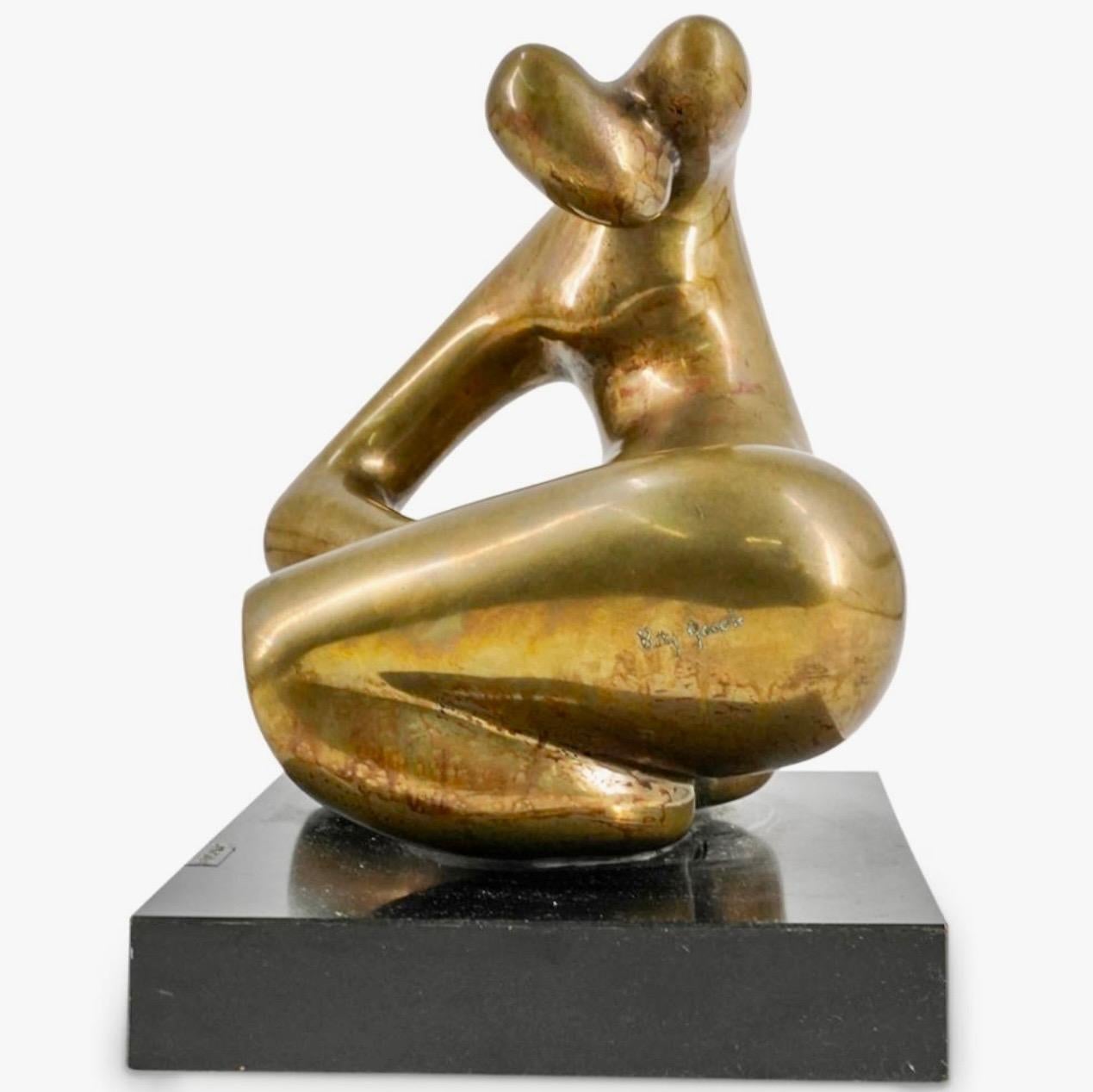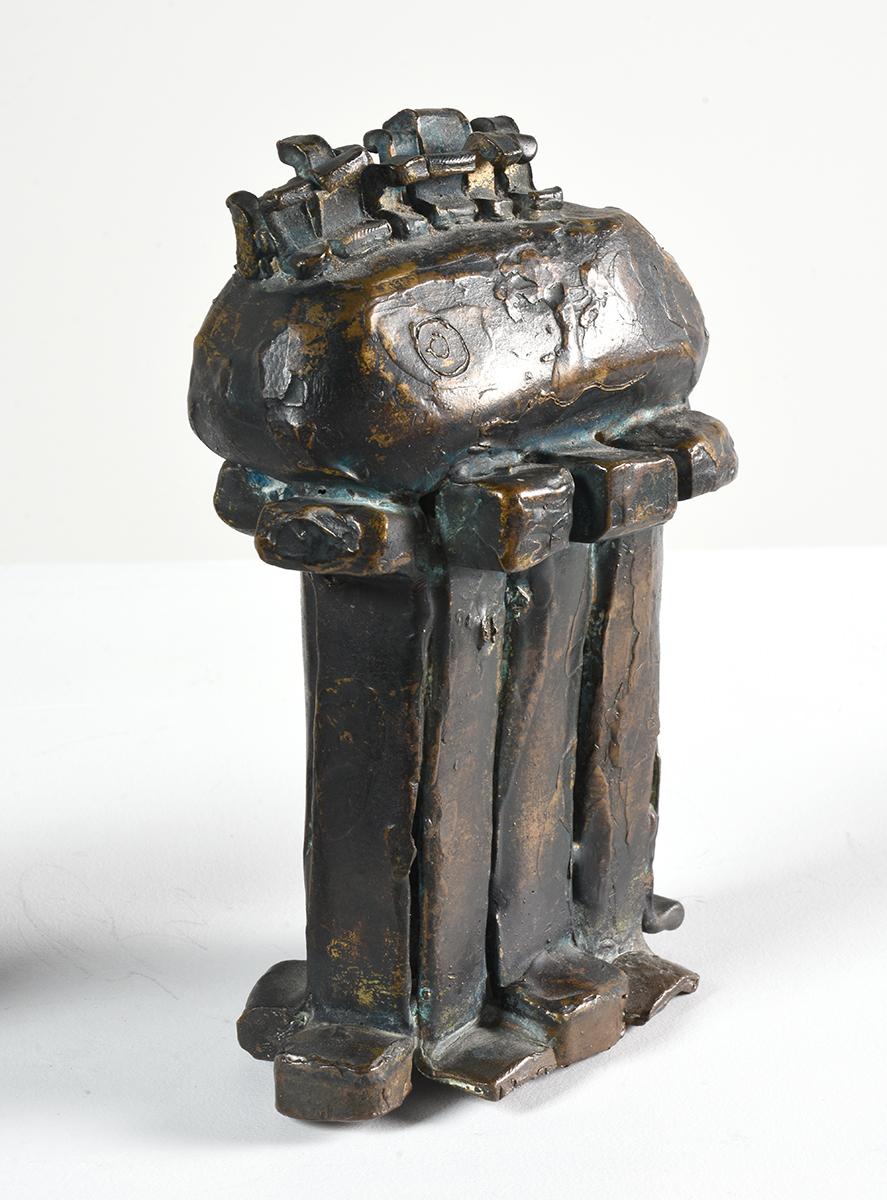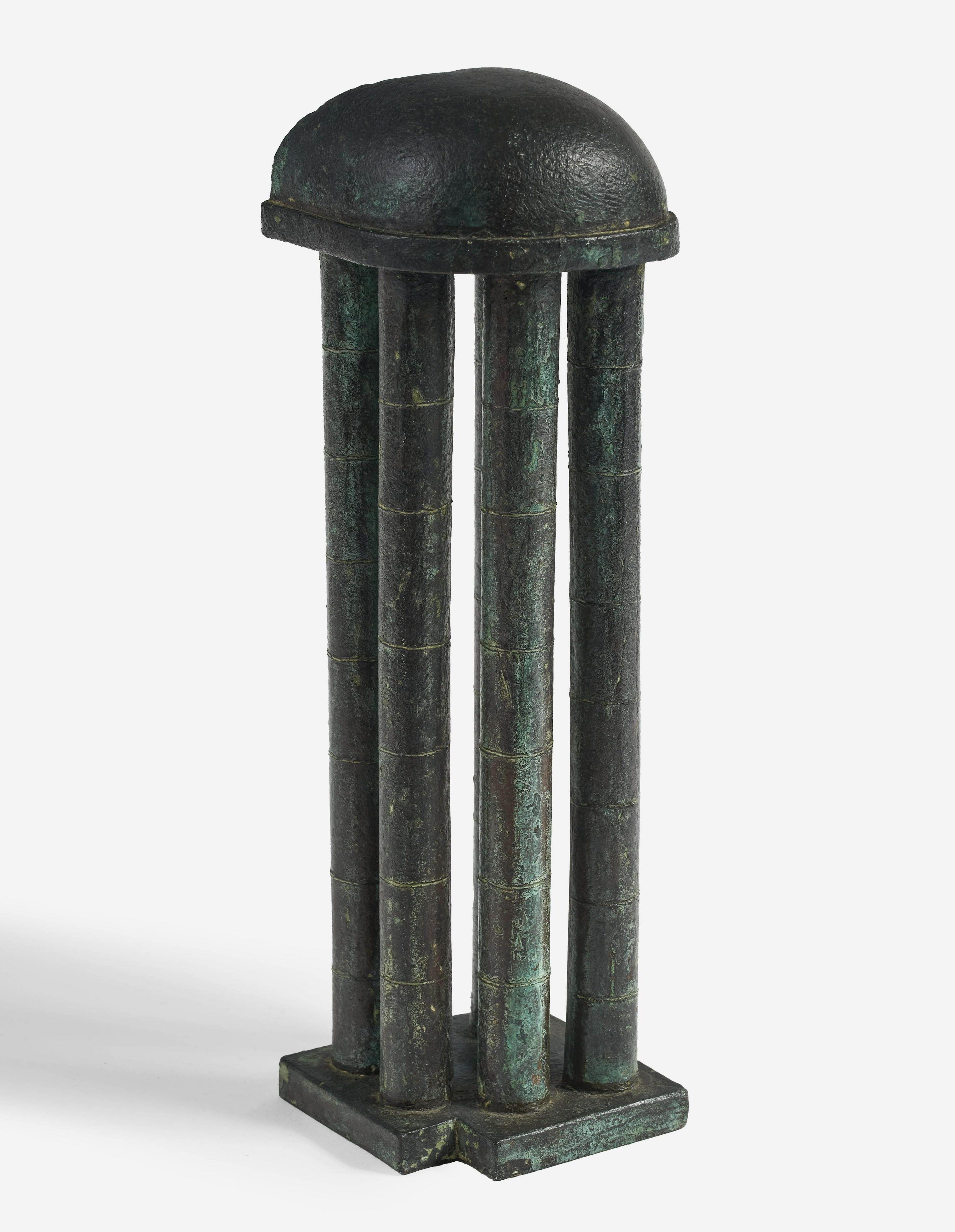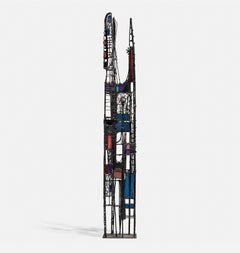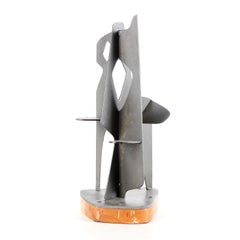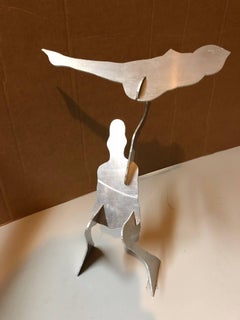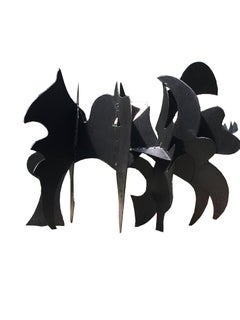
Convergence
David HayesConvergence2003
2003
About the Item
- Creator:David Hayes (1931 - 2013, American)
- Creation Year:2003
- Dimensions:Height: 33 in (83.82 cm)Width: 19 in (48.26 cm)Depth: 25 in (63.5 cm)
- Medium:
- Movement & Style:
- Period:
- Condition:
- Gallery Location:East Hampton, NY
- Reference Number:1stDibs: LU18122076673
David Hayes
David Hayes was born in Hartford, Connecticut, and received an A.B. degree from the University of Notre Dame in 1953 and a MFA degree from Indiana University in 1955, where he studied with David Smith. He has received a postdoctoral Fulbright award and a Guggenheim Fellowship. He is a recipient of the Logan Prize for Sculpture and an award from the National Institute of Arts and Letters. He has had over 300 exhibitions and is included in over 100 institutional collections, including that of the Museum of Modern Art and the Guggenheim Museum in New York. In 2007 was conferred an honorary Doctor of Humane Letters degree by Albertus Magnus College. He worked in Coventry, Connecticut, and died April 9, 2013 of leukemia at the age of 82, four days after his final opening.
- Mid-Century Metal and Colored Glass Sculpture - Like Stained GlassLocated in Miami, FLMid-Century enameled steel, glass sculpture that is visually balanced from 360 degrees. All the positive and negative spaces work in total harmony which is a testament to Samuel Cashwan...Category
1950s American Modern Abstract Sculptures
MaterialsSteel
- John-Paul Philippe, "Untitled", table top abstract steel sculpture on wood baseBy John-Paul PhilippeLocated in Glenview, IL"Untitled" is an abstract steel sculpture on a wood base by New York based contemporary artist John-Paul Philippe. The artist was born in 1955 and began his career as a painter.Due t...Category
1990s American Modern Abstract Sculptures
MaterialsSteel
- The Test, Assembled Kinetic Modernist Sculpture Puzzle ConstructionBy William King (b.1925)Located in Surfside, FL"The Test," 1970 Aluminum sculpture in 5 parts. Artist's cipher and AP stamped into male figure, front, 20 5/16" x 12 1/2" x 6 5/7" (approx.) American sculptor King is most noted for his long-limbed figurative public art sculptures depicting people engaged in everyday activities such as reading or conversing. He created his busts and figures in a variety of materials, including clay, wood, metal, and textiles. William Dickey King was born in Jacksonville, Florida. As a boy, William made model airplanes and helped his father and older brother build furniture and boats. He came to New York, where he attended the Cooper Union and began selling his early sculptures even before he graduated. He later studied with the sculptor Milton Hebald and traveled to Italy on a Fulbright grant. Mr. King worked in clay, wood, bronze, vinyl, burlap and aluminum. He worked both big and small, from busts and toylike figures to large public art pieces depicting familiar human poses — a seated, cross-legged man reading; a Western couple (he in a cowboy hat, she in a long dress) holding hands; a tall man reaching down to tug along a recalcitrant little boy; a crowd of robotic-looking men walking in lock step. Mr. King’s work often reflected the times, taking on fashions and occasional politics. In the 1960s and 1970s, his work featuring African-American figures (including the activist Angela Davis, with hands cuffed behind her back) evoked his interest in civil rights. But for all its variation, what unified his work was a wry observer’s arched eyebrow, the pointed humor and witty rue of a fatalist. His figurative sculptures, often with long, spidery legs and an outlandishly skewed ratio of torso to appendages, use gestures and posture to suggest attitude and illustrate his own amusement with the unwieldiness of human physical equipment. His subjects included tennis players and gymnasts, dancers and musicians, and he managed to show appreciation of their physical gifts and comic delight at their contortions and costumery. His suit-wearing businessmen often appeared haughty or pompous; his other men could seem timid or perplexed or awkward. Oddly, or perhaps tellingly, he tended to depict women more reverentially, though in his portrayals of couples the fragility and tender comedy inherent in couplehood settled equally on both partners. His first solo exhibit took place in 1954 at the Alan Gallery in New York City. King was elected to the American Academy of Arts and Letters in 2003, and in 2007 the International Sculpture Center honored him with the Lifetime Achievement in Contemporary Sculpture Award. Mr. King’s work is in the collections of the Metropolitan Museum of Art, Guggenheim Museum, Whitney Museum and the Museum of Modern Art in New York and the Hirshorn Museum at the Smithsonian American Art Museum in Washington, among other places, and he had dozens of solo gallery shows in New York and elsewhere. Reviews of his exhibitions frequently began with the caveat that even though the work was funny, it was also serious, displaying superior technical skills, imaginative vision and the bolstering weight of a range of influences, from the ancient Etruscans to American folk art to 20th-century artists including Giacometti, Calder and Elie Nadelman. The New York Times critic Holland Cotter once described Mr. King’s sculpture as “comical-tragical-maniacal,” and “like Giacomettis conceived by John Cheever.”Category
1970s American Modern Figurative Sculptures
MaterialsMetal
- PeaceBy Heloise CristaLocated in Missouri, MOHeloise Crista (1926-2018) Peace Brass and Copper approx. 15 x 17 x 10 inches Heloise Crista, Acclaimed Sculptor and Frank Lloyd Wright Apprentice FRANK LLOYD WRIGHT FOUNDATION JU...Category
Mid-20th Century American Modern Abstract Sculptures
MaterialsBrass, Copper
Price Upon Request - Black Falling Man with FormBy Ernest Tino TrovaLocated in Missouri, MOErnest Tino Trova "Black Falling Man with Form" 1996 Bronze Ed. 1/3 Signed, Dated and Numbered Verso approx. 16 x 8.5 x 16 inches Known for his Falling Man series in abstract figura...Category
1990s American Modern Figurative Sculptures
MaterialsBronze
Price Upon Request - Vivid HarmonyBy Brad RudeLocated in Denver, COArtist Brad Rude was born in Montana and has lived in Walla Walla, Washington most of his life. His journeys through his grandfather's folk art studio left...Category
2010s American Modern Abstract Sculptures
MaterialsBronze, Enamel
